5 best indoor screening plants to protect your privacy
Keep prying eyes away with these indoor plants
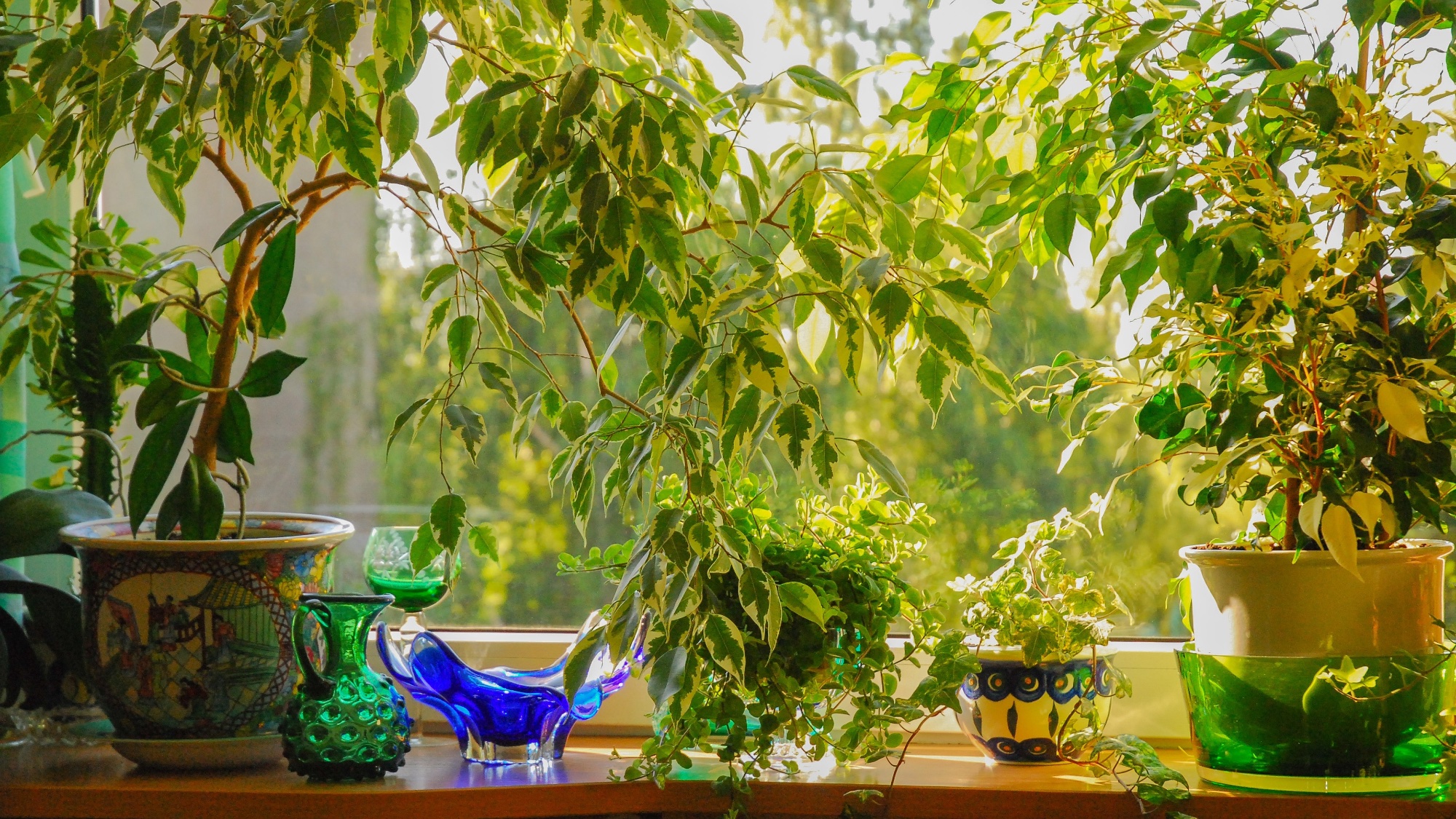
Plants can have many purposes in the home. Some plants will make your house smell nicer, others help reduce moisture levels and will thrive in a bathroom, while all of them bring the joy of nature into the home.
Plants are often strategically positioned outside to create privacy, whether it’s a hedge in your front yard to stop prying eyes or around a trellis covered with a climber to section off a seating area in your backyard. However, while plants are often used as screens outside, the same thought isn’t given to using plants for privacy inside.
Here we highlight 5 of the best indoor plants to use as screens.
1. Blue Star Fern

The Blue Star Fern (Phlebodium aureum) is one of my favorites, (although I have a few). It’s a lush plant with a full shape and has beautiful leaves with a blue-green tinge, hence its name. Hortology describes this fern as sturdier and less delicate than its contemporaries – making it a winner as a screening plant.
Having cut down a screening hedge in my small front yard a few months ago, shielding light from the rest of my plants, I wanted to regain some privacy. With a table already positioned in my north-facing bay window, it was an easy solution to place a glorious Blue Star Fern in the spot.
Although ferns can be tricky to grow in our heated homes, the Blue Star Fern is one of the easiest. Often found in the canopy of rainforests, it enjoys a warm, humid environment out of direct sunlight. If exposed to too much direct sunlight, its fronds can become brown and crispy, while too little light will result in paler leaves.
The Blue Star Fern enjoys a drink and prefers to be on the moist side rather than being allowed to dry out. Weekly watering should be sufficient.
Get instant access to breaking news, the hottest reviews, great deals and helpful tips.
As they are humidity-loving plants, I give my plant a regular mist with water, and I find it doesn’t harm or mark the leaves. However, some plant specialists suggest keeping the leaves dry and placing the plant on a pebble tray partly filled with water.
This plant is a safe bet if you have pets, as it is non-toxic to cats and dogs.
2. Swiss cheese plants
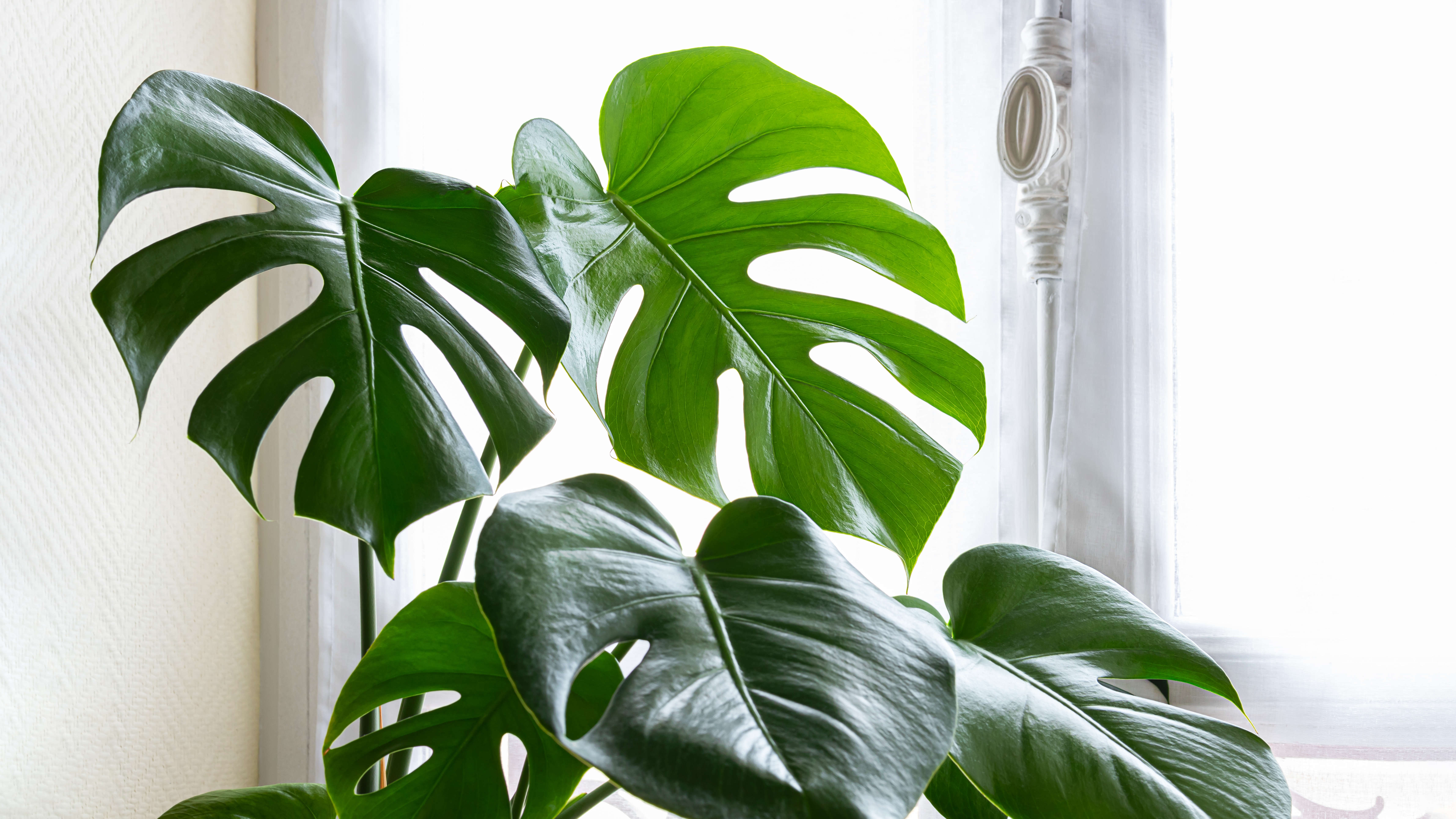
The Swiss cheese plant (Monstera adansonii) makes a spectacular show and is easy to care for. The plant has broad, glossy green leaves, which develop holes as it ages, resembling Swiss cheese.
Plant specialist Patch, says the Swiss cheese plant is native to the jungle floors of South America, where the holes in the leaves allow light to filter through to its lower shoots.
Position your plant out of direct sunlight to avoid leaf burn and keep it moist for your plant to thrive. Dig your finger about an inch into the soil – if it feels dry it’s time for water. The Swiss cheese plants love a humid environment, so keep it away from drafts and give the leaves a mist to increase the humidity level.
Swiss cheese plants are fast-growing, climbing plants, and if kept in optimal conditions, can grow one to two feet a year. As they like to climb, it’s best to support them with a moss pole, which gives the plants a natural surface to grab onto – acting like a surrogate tree. You could try the 30-inch moss pole from Joyseus, available as a two-pack. ($10, Amazon). But if your plant starts to get too large for your space, you can give it a prune to keep it in shape.
Although Swiss cheese plants look stunning and work well as screening plants to add privacy, this plant is toxic to pets, so be mindful when growing them indoors.
3. Snake plant
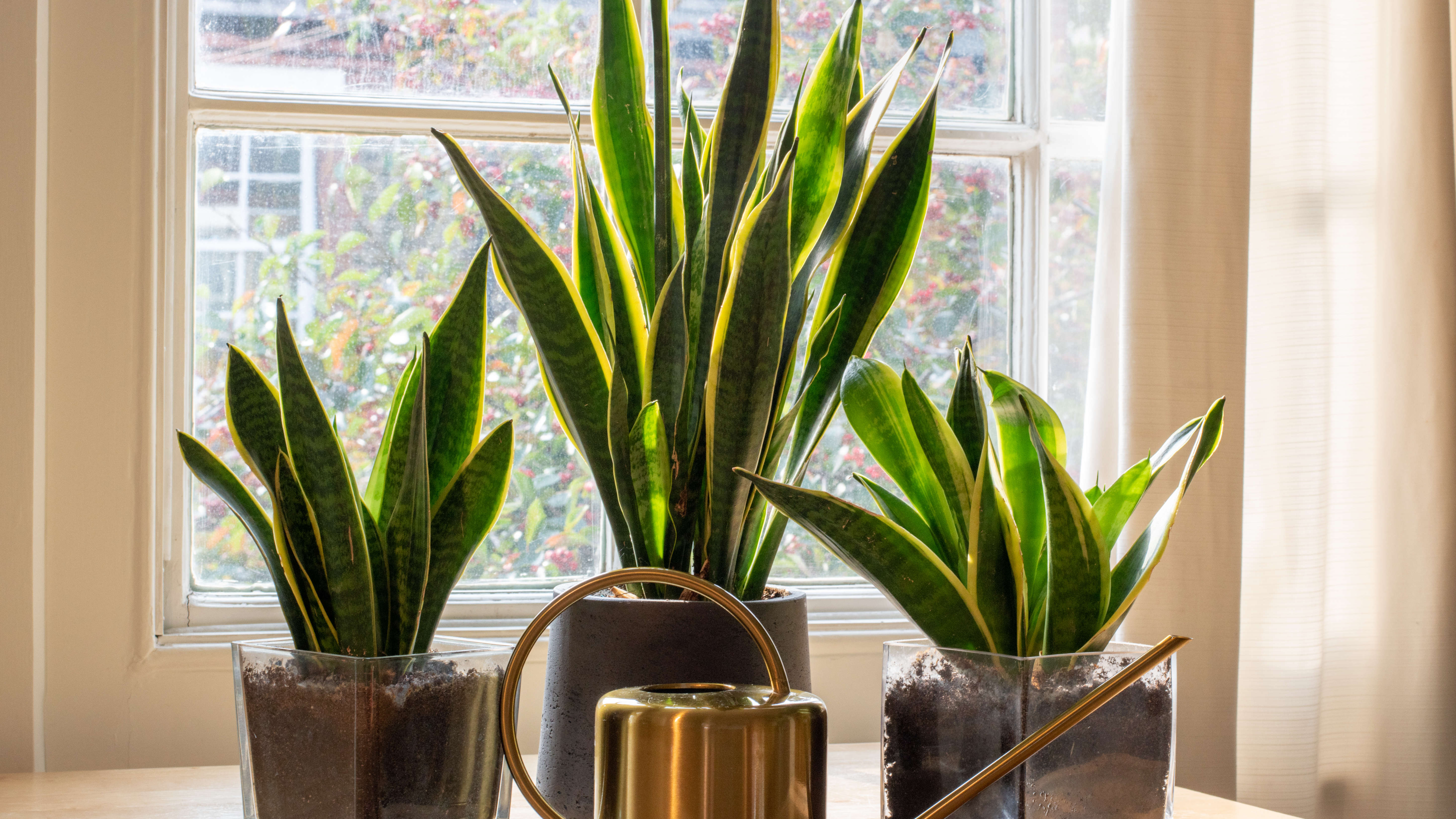
It’s always worth thinking outside the box. You don’t need to stick with using a single plant to create a screen, sometimes a row of plants will work. Outside, we regularly plant lines of shrubs to form a hedge, so why not take that concept inside?
Rather than placing one large plant in a window you can group smaller plants together to make a statement on its own. By placing them side-by-side, you can close any gaps while making a screen and a contemporary design statement.
To create a consistent look, place all your plants in identical plant pots and align them in a neat row. Alternatively, pot them in one long container.
So, what would work well? The Snake plant (Sanserviereia trifasciata) is a stylish houseplant with strong upright, sword-like variegated leaves. And, as an added benefit, it’s also one of the best low maintenance plants to care for indoors. It will only need watering every two weeks, but won’t shrivel up if left longer.
They are particularly adaptable and will thrive in indirect sunlight, although they won’t come to harm in full sun or low light.
Do they have any disadvantages? They are toxic to pets, so keep them away from cats and dogs.
4. Weeping fig
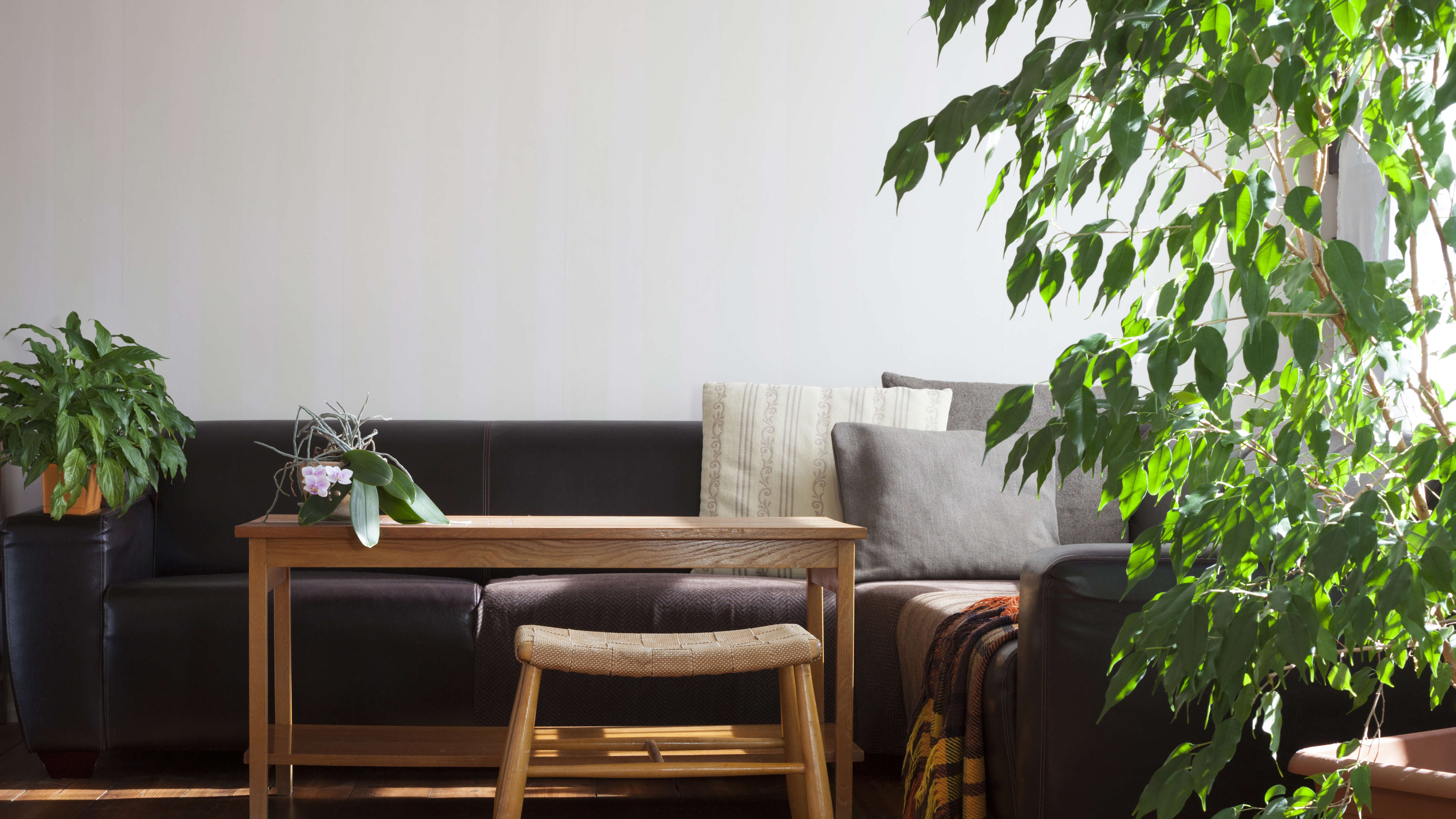
If you’re looking for height, the Weeping fig (Ficus benjamina) could be the privacy plant for you. Outside it can reach 80 feet, but it is less vigorous when grown as an indoor tree.
With glossy, oval leaves on arching branches, the Weeping fig does well in bright, indirect sunlight. Keep the plant moist, but don’t allow it to sit in water, as the leaves will drop and it may cause root rot. It also does well in a humid environment otherwise the leaves may dry out – an occasional mist will help. The New York Botanical Garden recommends avoiding cold drafts, dry heat and sudden temperature changes.
Weeping figs are reluctant movers. If relocated, their leaves may turn yellow and drop. So, if you move the plant give it a couple of weeks to settle and avoid overwatering while it adjusts.
If your Weeping fig has grown too tall and needs pruning, wait until it is dormant, during fall or winter. The plant is less likely to become damaged if pruned out of its growing season.
This plant is toxic to pets, so avoid if you have dogs or cats.
5. Rubber plant
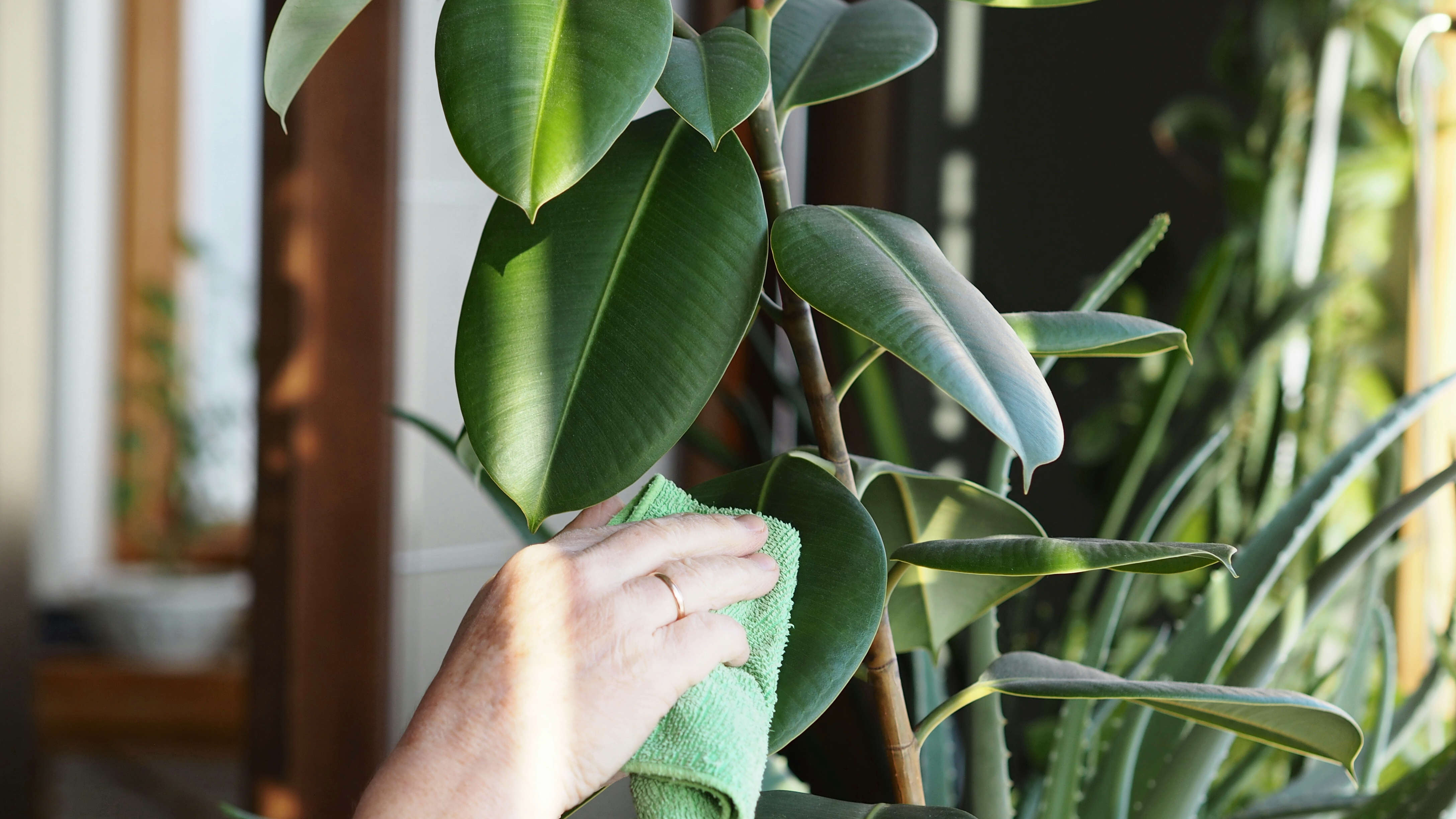
The ultimate indoor houseplant for creating privacy has to be the Rubber plant (Ficus elastica). The plant gets its name from the milky white latex that can be extracted from its leaves to make rubber.
The thick, large leaves make a bold statement and act as a screen when positioned in a window. Despite growing to almost 100ft in its natural habitat, inside, you can expect it to grow from 1ft to over 8ft. You may want to stake the plant to keep it upright as it grows.
It will thrive in indirect sunlight but doesn’t like being overwatered, so ensure its pot has plenty of drainage holes and water once the soil becomes dry. And, to keep the plant's leaves shiny and bright, clean them with tepid water using a soft cloth to remove dust.
The Rubber plant is best avoided if you have pets – latex can be poisonous when ingested and cause skin irritation.
There are plenty of options for creating a privacy screen with indoor plants to stop your neighbours peering in. And the added benefit is unlike hedges and other plants used as screens outside, they can be moved about and repositioned when needed, making them an adaptable choice.
More from Tom's Guide
- Here are 5 tips to help overwatered plants
- Avoid these 7 mistakes that can kill a houseplant
- Check out these 7 plants that will help to prevent mold in your home

Camilla is the Homes Staff Writer and covers everything to do with homes and gardens. She has a wealth of editorial experience, mounting over 30 years, and covers news and features, tests products for reviews and compiles buying guides.
Her work has appeared in business and consumer titles, including Ideal Home, Real Homes, House Beautiful, Homebuilding & Renovation, and Kitchen & Bathroom Business. She’s even appeared on the cover of Your Home, writing about her own house renovation.
Although she’s obsessed with decorating her home, she also enjoys baking and trying out the latest kitchen appliances. But when she’s not inside, you’ll find her pottering about in her yard, tending to her vegetable patch or taking in her prized hydrangeas.
